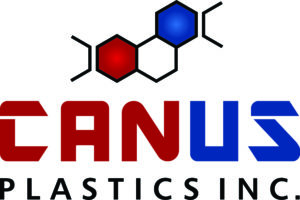Thermoforming Troubles: Dealing with Material Shrinkage

Thermoforming is a widely used method to mold plastic into various shapes. It involves heating a plastic sheet until it’s pliable, then forming it over a mold. This process is pivotal for creating many everyday plastic items, from packaging to complex parts. However, like any other process, thermoforming isn’t free from challenges. One common issue faced is material shrinkage, which can significantly impact the quality of the final product.
Material shrinkage occurs when the plastic doesn’t maintain its intended shape after cooling. This problem can lead to finished products that are too small or distorted, making them unusable. Understanding shrinkage is key to ensuring the quality and reliability of thermoformed products. By learning more about why shrinkage happens and how to control it, manufacturers can produce consistent and high-quality results every time.
Understanding Material Shrinkage
Material shrinkage in thermoforming refers to the reduction in size of the plastic product as it cools and solidifies. During the cooling phase, plastic contracts; this behavior stems from the natural properties of the material. When plastic heats, its molecules vibrate and spread apart. As it cools, the molecules come back together, causing the material to shrink slightly. This change can affect dimensions and can lead to variations from the original mold specifications.
The degree of shrinkage can vary based on several factors, such as the type of plastic used, the thickness of the sheet, and the forming temperature. For example, some plastics are more prone to shrinkage because of their molecular structure. Others might shrink more due to how they react to specific temperature changes. Understanding these nuances can help in predicting and avoiding shrinkage issues.
Common Causes of Material Shrinkage
There are several reasons why material shrinkage might occur during thermoforming. Here are the most common ones:
– Insufficient Cooling Times: If the plastic doesn’t cool adequately before being removed from the mold, it might continue to shrink as it stabilizes at room temperature.
– Incorrect Plastic Type or Quality: Not all plastics shrink the same way. Using a plastic type that’s not ideal for the specific thermoforming application can lead to unexpected shrinkage.
– Inconsistent Heating: Uneven heating can cause the plastic to shrink irregularly. Parts of the sheet may be thicker and cool differently, resulting in less predictable shrinkage patterns.
By addressing these common causes, it’s possible to manage and minimize shrinkage. Properly managing cooling times, selecting the right plastic material, and ensuring consistent heating can help achieve a more precise final product. Understanding these aspects enhances control over the manufacturing process and leads to better outcomes.
Preventative Measures
To tackle material shrinkage effectively, it’s important to adopt some key strategies throughout the thermoforming process. Start by ensuring the plastic has ample time to cool. Allowing sufficient cooling time can prevent ongoing shrinkage once the plastic is removed from the mold. Avoid rushing this step; patience can make a significant difference to the end quality.
Choosing the right type of plastic is equally important. Not all plastics behave the same way when heated and cooled, so selecting a material that’s known for its stability can help in controlling shrinkage. Opt for high-quality, consistent materials to ensure predictable results. Consulting with suppliers about the best material options for specific projects can offer added value.
Maintaining consistent heating across the plastic sheet is another critical factor. An even temperature helps the material to expand and contract uniformly, reducing the risk of inconsistent shrinkage. Regularly calibrating your equipment and checking temperature controls can ensure even heating. Consider using advanced thermoforming technology to further control these elements efficiently.
How Canus Plastics Inc. Can Help
If you’re struggling with thermoforming issues like shrinkage, seeking expert help can be beneficial. Experienced professionals can provide tailored solutions to meet your needs. From selecting the right plastic material to fine-tuning the production process, professional support can streamline operations and improve quality.
Canus Plastics Inc. offers a wide array of services designed to address such challenges. Utilizing technology like CNC machining and vacuum forming, skilled teams can help control and reduce troublesome shrinkage. Discussing specific requirements with experts can lead to optimized processes that limit shrinkage and enhance product reliability.
Achieving Optimal Results in Thermoforming
Effectively managing shrinkage involves understanding its causes and applying practical solutions. By focusing on adequate cooling, selecting the right materials, and ensuring consistent heating, you can achieve better consistency and quality in thermoformed products. It might seem like an intricate dance of details, but with the right approaches, the results speak for themselves.
Collaboration with professionals provides additional insight and access to innovative solutions, helping to ensure successful outcomes. Addressing these concerns leads to more reliable products and potentially less waste in production. Exploring these strategies prepares your operations for success and adaptability in various thermoforming projects.
For those seeking the best solutions in thermoforming and high-quality plastic in Ottawa, trust Canus Plastics Inc. Our advanced technologies and expert team can help tackle challenges like material shrinkage with precision and care. Discover how our plastic in Ottawa services can assist you in achieving consistency and quality in your plastic products.

